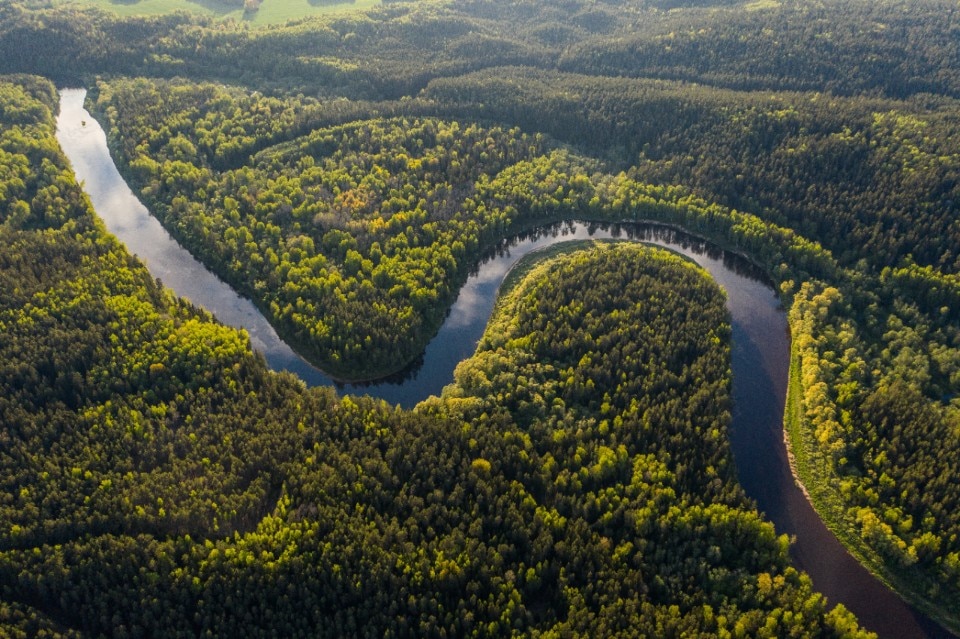This article was originally published on Domus 1080, giugno 2023.
The basic diagram of networked urbanism contains important binaries that we have come to take for granted when we think about the city. The urban emerges as a realm that is separate from, even in opposition to, the rural, however dependent the former may be on the latter. The citizen becomes clearly differentiated from the peasant, as are the expected activities of one and the other. Culture is rendered as divergent from, and superior to, nature. This binary urban diagram converged with evolutionary social thought to decant a linear way of thinking about “progress”, which dominates the way we narrate the history of the rise of cities.1
When the diagram of this archetypical, binary relationship is applied to Amazonia, it becomes annulled. Amazonian urban archetypes do not fully match Western imaginaries of the urban, neither in visual structure nor in definition, let alone in binary or linear terms. Their neural networks are urban, rural or agroecological, and forested; their citizens are peasants; they can fish, hunt, cultivate, gather and perform urban activities – govern, “trade” (circulate reciprocally), specialise in the arts and crafts, play sports and more besides.
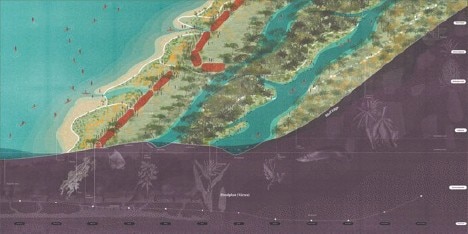
In the 1970s, archaeologist Donald Lathrap chose to follow the lead of Peruvian archaeologist Julio C. Tello, whose research at the Chavín de Huantar archaeological site, in the Peruvian Andes, had led him to point to the Amazon as an important early root of Andean civilisation.² Lathrap laid the foundations for the work of historical ecologists, who approach the region from a perspective that acknowledges the role played by Amazonian nations and peoples, past and present, in reshaping, designing, constructing and poetically eco-, geo- and bio-engineering what we now know are regional expanses of cultural and domesticated forests.
These cultivated and managed forests supported what archaeologists describe as “complex societies”: chiefdoms, regional polities, heterarchies, confederations, or other forms of governance webs that stem from the most basic unit of social organisation – what we could call a commune or community, to use a term introduced into Amazonia by Catholic missionaries. Researchers began to map the presence of extremely rich and biochemically diverse anthrosoils known as terra preta do Índio and terra morena.
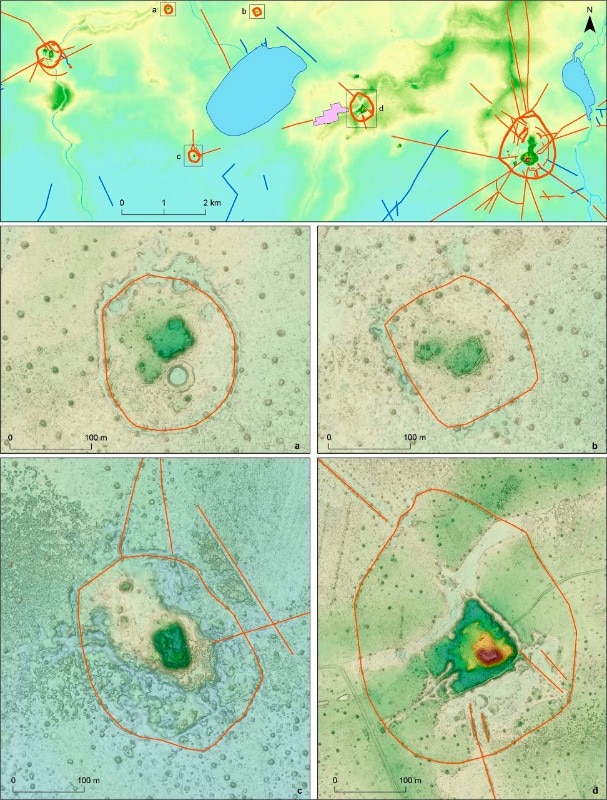
Amazonians have been biocharing (smoking biomass) and accumulating or composting generations of organic waste into rich stratifications of extremely fertile humus completely capable of supporting agroecological systems that have never been reduced to a single species. Amazonian agriculture is polycultural; it has always followed the logic and structure of the forest. A typical Amazonian chakra³ supports between 50 and 75 species that provide a rich array of sacred foods whose harvesting periods respond to different seasons and cycles, sacred medicinal plants, natural fibres, timber, palm leaves and other construction materials, natural oils and resins, rubber and other culturally important produce.4
Amazonians also practice rotational and shifting cultivation, allowing the soil to rest periodically. Everything shifts in this extremely dynamic, fluid and diverse mosaic of ecologies: agroecological gardens shift, settlements shift and are multi-sited,⁵ ports move, settlements follow different fission rules, and so forth. Amazonians are weavers of dynamic networks that extend along continental routes and dendrites. They formed “societies of nature”⁶ into reticular, fractal, neural and energetic regional systems – galactic, living territories – of plurinational kinship with extreme beauty and socioecological complexity.
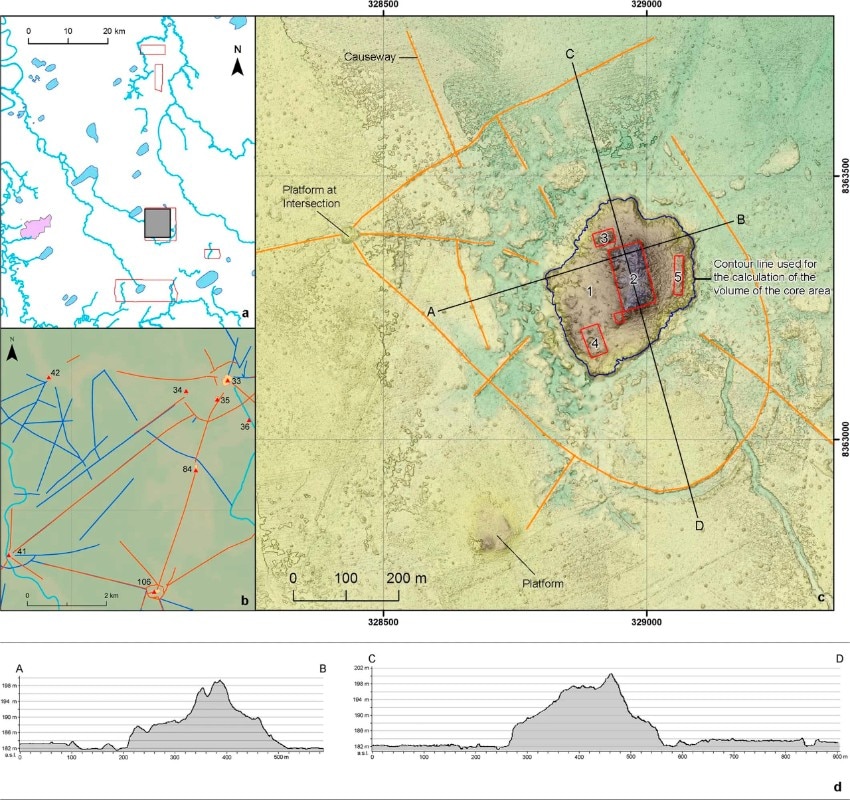
Seventy years of heated debates over whether or not civilisations were possible and existed in Amazonia are finally being settled thanks to a prospection satellite technology, LiDAR (light detection and ranging), whose ability to penetrate clouds and canopy to survey the surface is revealing not only the mineral and other deposits it is intended to find, but also the outlines of ancient urbanisms in the region. They are surfacing to speak to us of grand agroecological urban and interconnected social constellations, and the possibility of living in symbiotic ecosocial systems of abundance in which both power and resources are better distributed than in the realm of binaries and top-down vertical hierarchies.
Even though only rigorous stratification analysis will allow us to understand the timeline of human occupation in Bolivian Amazonia, for example, the images published in Nature (June 2022) by archaeologists Heiko Prümers, Carla Jaimes Betancourt, José Iriarte, Mark Robinson and Martin Schaich are sufficiently robust to demonstrate that we can safely speak of social complexity in the region. In this mega-region alone, which has been continuously inhabited for 8,000 years, ancient Amazonians moved millions of tons of soil to construct raised fields, fish weirs, reservoirs, causeways, mounds and other geoformations through accretion, incrementality, and thanks to the ability of autonomous and self-governed communities – large, medium and small – to organise themselves.
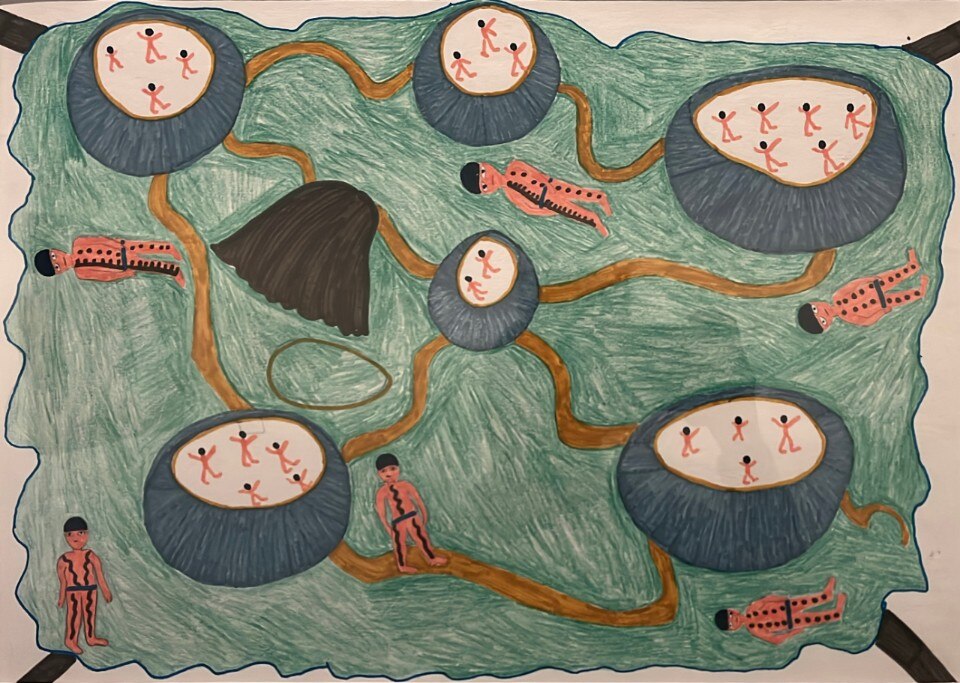
The logic of the systems of dispersed settlement characteristic of Native America was not legible to the European eye and sense of place, to its definition and image of the city. Nor were these systems tolerable from the perspective of central control and centralised authority, as their citizen-peasants were being brought as subjects under European monarchies. The agricultural forests of Amazonian nations remained outside of colonial territorial frameworks: instead of cultivated, managed and enhanced (agri)cultural landscapes, they were perceived as entangled, chaotic and untenured natural landscapes.⁷
Historical ecologists can now triumphantly assert that Amazonia was the cradle of highly complex societies that have been described with more or less detail for the Llanos de Moxos in Bolivia, the Upper Xingu in Brazil, the Upano Valley in Ecuador, and the island of Marajó in Brazil, among other ancient sites. When we observe the history of Amazonian civilisations, we find the interconnected and multi-scalar agroecological urban networks of regional scale to be much more complex than the simplification of the urban-rural binary of the hegemonic paradigm that has led to the industrialisation of monocultures and the zonification of land. The complexity of Amazonian urban systems is ecological in nature, woven of interdependencies and synergies of all beings, tangible and intangible – including animals (among them, humans), plants, trees, rivers, winds and soils – each agency present with its own intelligence and consciousness, with the same right to exist.
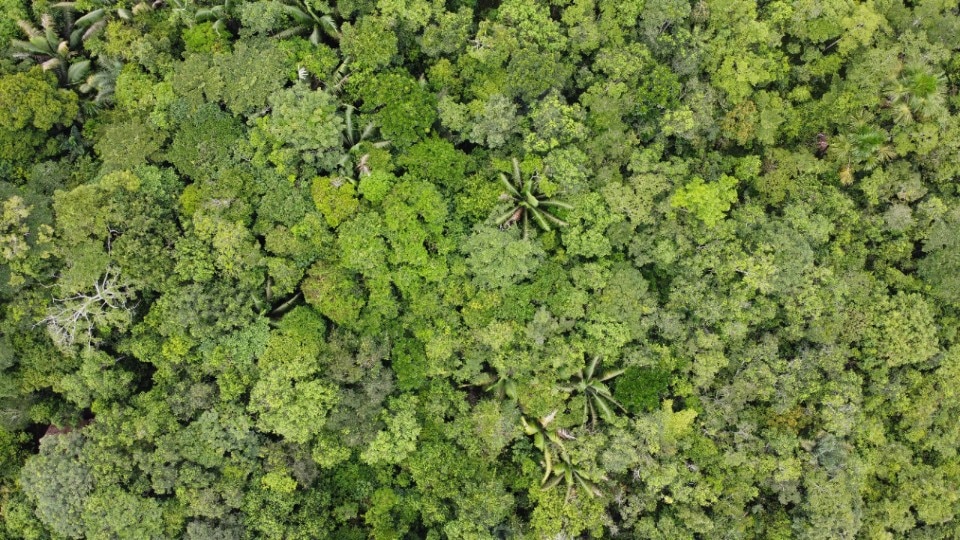
1. Vere Gordon Childe, The Urban Revolution, in The Town Planning Review, 1950, vol. 21, n. 1, pp. 3-17.
2. Donald W. Lathrap, Yarinacocha: Stratigraphic Excavations in the Peruvian Montaña (doctoral dissertation, Harvard University), 1962. Donald W. Lathrap, The Upper Amazon, Thames & Hudson, London 1970, pp. 256.
3. Polycultural orchard in Kichwa. There are terms for this type of agroecology in almost every Amazonian language.
4. For Amazonians nature does not exist as an abstract category, as something separate, nor is nature a sum of “resources”.
5. See Christine Padoch, Eduardo Brondizio, Sandra Costa, Miguel Pinedo-Vasquez, Robin R. Sears, Andrea Siqueira, Urban Forest and Rural Cities: Multi-sited Households, Consumption Patterns, and Forest Resources in Amazonia, in Ecology and Society, 2008, vol. 13, no. 2.
6. See Philippe Descola, In the Society of Nature: A Native Ecology in Amazonia, Cambridge University Press, 1994.
7. Early chroniclers in Amazonia, such as Dominican friar Gaspar de Carvajal, describe cities and large settlements in Amazonia, as they did for Mesoamerica and the Tawantinsuyo (“Inca Empire”).
Opening image: photo by Ivars Utināns on unsplash


